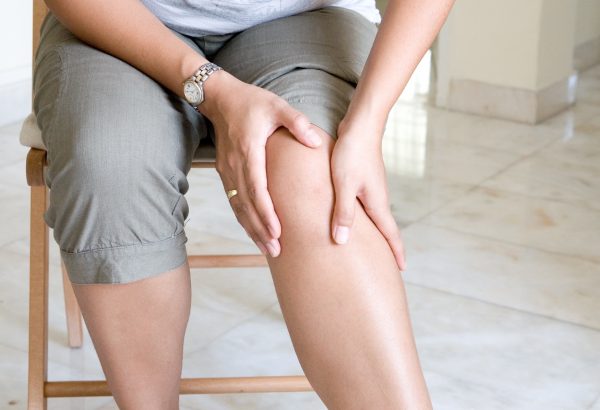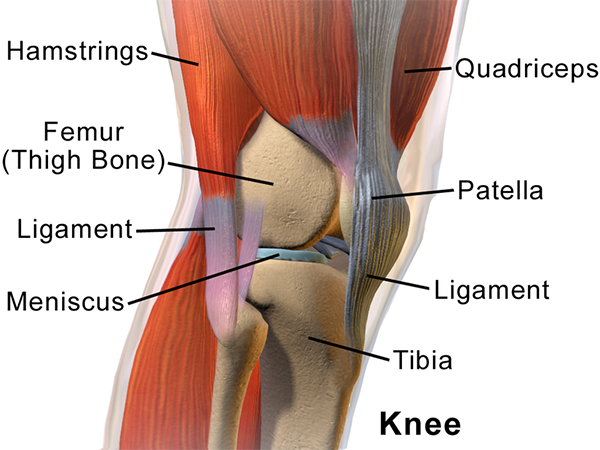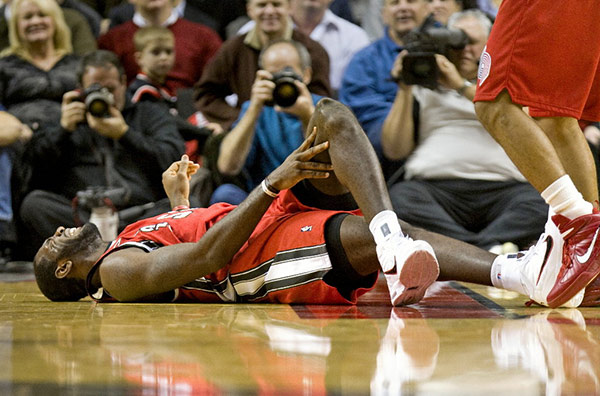I have ruptured my ACL! What happens now……
An ACL Rupture – what is that 3-lettered acronym, A – C – L? It is your Anterior Cruciate Ligament.
It is a dreadful experience to tell someone in the clinic that you suspect that their Anterior Cruciate Ligament is “gone.” Naturally it is downright awful for the client. We live in a very lucky time whereby there are multiple options available to you if you are in this group. What we will discuss today is what happens next.
Furthermore, there is a lot of coverage in the media surrounding this topic. Professional athletes involved in sports with a high emphasis on pivoting, changing direction and leaping are more susceptible to a knee injury involving their ACL.
For example, the AFL governing body release a metric of data at the conclusion of each year surrounding injuries. Since the introduction of the Women’s competition (AFLW), there has been a spike in the incidence of ACL injuries.
The cost of ACL injuries requiring surgical intervention in Australia in 2017 was $142 million! This trend is ever increasing. Furthermore, the highest increase in the population subset is females under the age of 18. The increasing incidence of ACL injury in Australia is an emerging public health problem, with potentially detrimental long-term health outcomes.
What is the role of the ACL?
Your ACL is one of four key knee ligaments. It is crucial to the stability of your knee joint. Your ACL is made of tough, fibrous material. It runs from the femur to the tibia (thigh to shin bones). It functions to control excessive knee motion by limiting joint mobility. Specifically, the ACL prevents the tibia from sliding too far forwards.
Common Mechanisms of Injury for ACL
General mechanism of injury is caused by forces generated within the athlete’s body. Roughly 3/4 of ruptures are sustained with minimal or no contact at the time of injury. A cut-and-plant movement is the typical mechanism that causes the ACL to tear. This is due to a sudden change in direction with the foot firmly planted. Rapid deceleration moments have also been linked to ACL injuries. Furthermore, sports involving landing from a jump, pivoting, twisting, and direct impact to the front of the tibia have an increased risk of the integrity of your knee.
More Common in Women for ACL Rupture
- Smaller size and narrow intercondylar notch
- Wider pelvis and greater Q-angle (angle between hip and knee)
- Greater ligament laxity
Elite Athletes vs. general population
This is more of a question of what do you want to get back to? Professional athletes will generally go down the surgery pathway. This is by-way-of having access to a fulltime medical team looking after their individual rehabilitation. Furthermore, they have the goal to return to the field of play at 100%.
For a comprehensive analysis of early ACL post-operative exercises to cover, fellow physiotherapist Jamie has written this article here
For the general public, however, it really depends on your lifestyle, age, fitness levels and future goals. If you are happy to walk, cycle and garden for the rest of your days, then it can be an appropriate pathway to attempt conservative management.
A really interesting case study outlined how even professional athletes can make a full recovery from an ACL injury if treated conservatively.
Imaging
An MRI is commonly used to determine if you have an ACL tear. It will also look for signs of any associated injuries in the knee. This can include bone bruising, Medial Collateral Ligament or meniscus damage. They often occur in combination with an ACL tear. This is due to the acute mechanism of injury that is associated with damage to the ACL.
In Australia, we are extremely lucky to have Medicare. If your Physiotherapist and GP suspect an acute ACL tear, then an MRI can be bulk billed. Ensure you check with reception prior to your appointment that they do, indeed, bulk bill!
See the following as a guide only:
Types MRI Scan of knee (16 to 50 years of age only). Following acute knee trauma with:
· inability to extend the knee. Suggesting the possibility of acute meniscal tear
· clinical findings suggesting acute anterior cruciate ligament tear
Following this, an MRI appointment appears scary. It is a loud machine which you lie down in. There are a few flashing lights. 20 minutes is generally all it takes whilst being still.
Traditional vs Conservative
A traditional ACL repair involves removing your torn ACL. This is done arthroscopically (using an incision point, probe and tiny cameras). A tendon is normally taken from elsewhere in your body, such as the hamstring, during surgery. When the new tendon is placed within your knee, it is called the graft. The surgeon will place the graft at the right spot by drilling two tunnels, in the femur and tibia. Screws are used to hold it into place to create a bridge. It can take many months for a new ACL to grow in fully.
Conservative is exactly that. No intervention from a surgeon, but a dedicated rehabilitation program set out by your physiotherapist is crucial. This will involve a combination of stretching, strengthening and core work. Once the knee is a lot stronger and stable, more dynamic and plyometric movements under controlled simulation should be incorporated. Again, this will vary between individuals.
My story
Round 1 of touch football last season, rendered a full rupture of the ACL for yours truly. Whilst initialled saddened, the saving grace for myself was that my meniscus and Medial Collateral Ligament were sound and in tact. After consulting the great team at Sport and Spinal Physiotherapy, it was agreed that we would trail a conservative management approach for 3-4 months. This means getting everything around the knee extremely strong. I have been diligently following a proper rehabilitation program to date. I’m up to 5, 000 single-leg leg presses. I am just glad that I can still ride my bicycle (I tell my wife it is for the rehab side of things!).
It is a work in progress.
Summary
Consulting a clinician here at Sport and Spinal Physiotherapy is your first step to recovery. From here, we can direct you towards a safe, optimal recovery. ACL injuries are timely, costly and frustrating, but the goal of a 100% return to play or normal activities should be at the forefront of your mind.
Resources
//journals.sagepub.com/doi/abs/10.1177/0363546518782698?journalCode=ajsb


